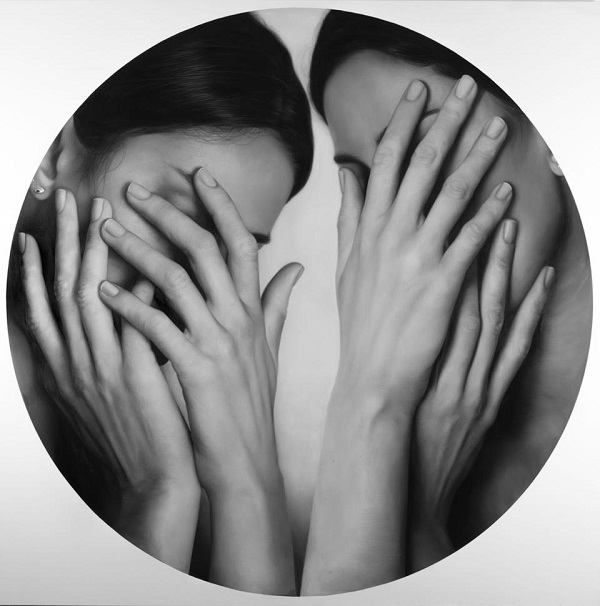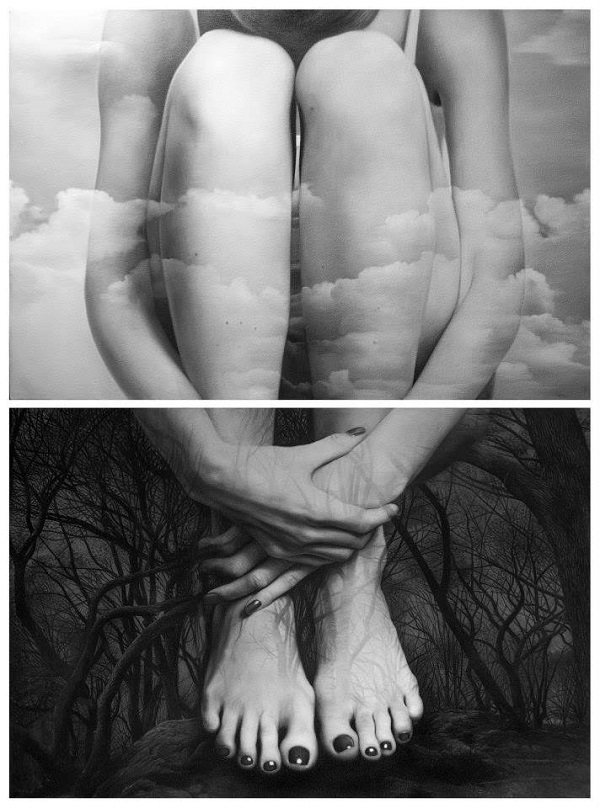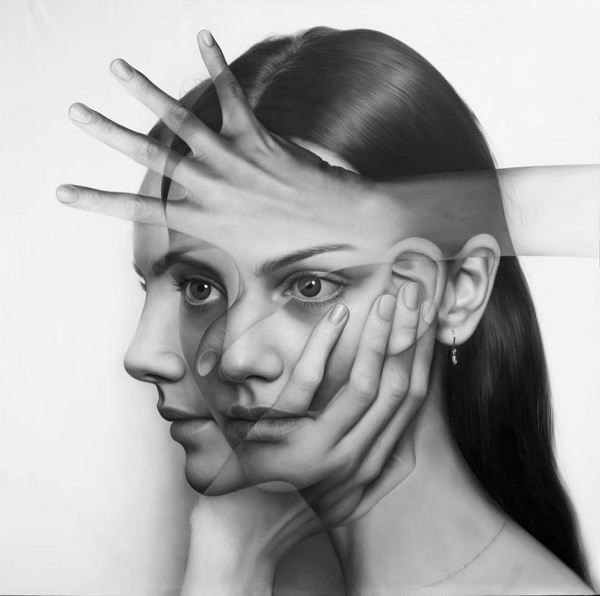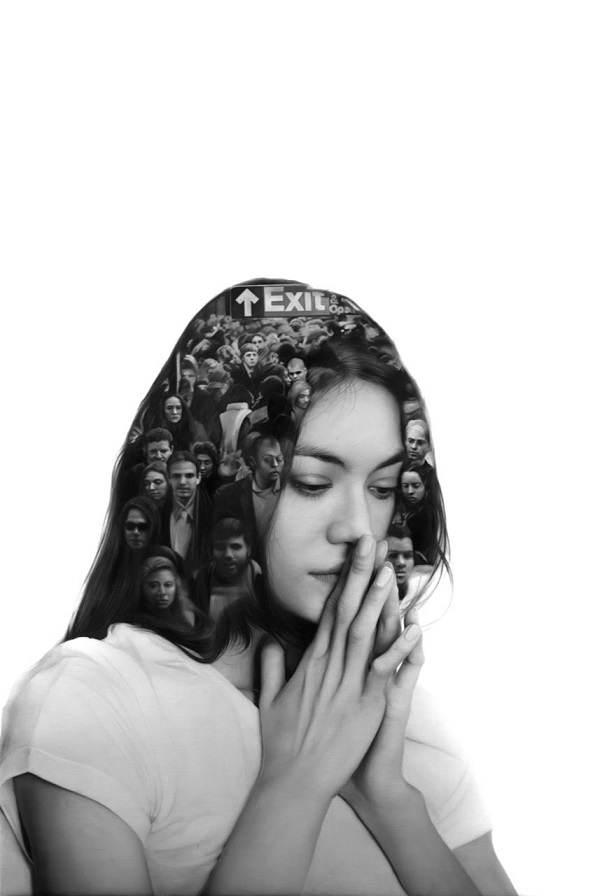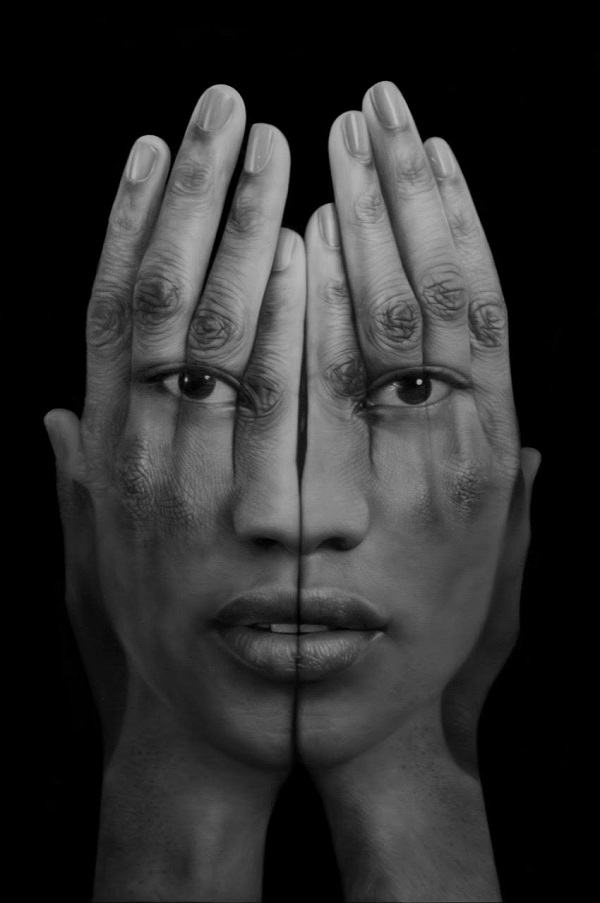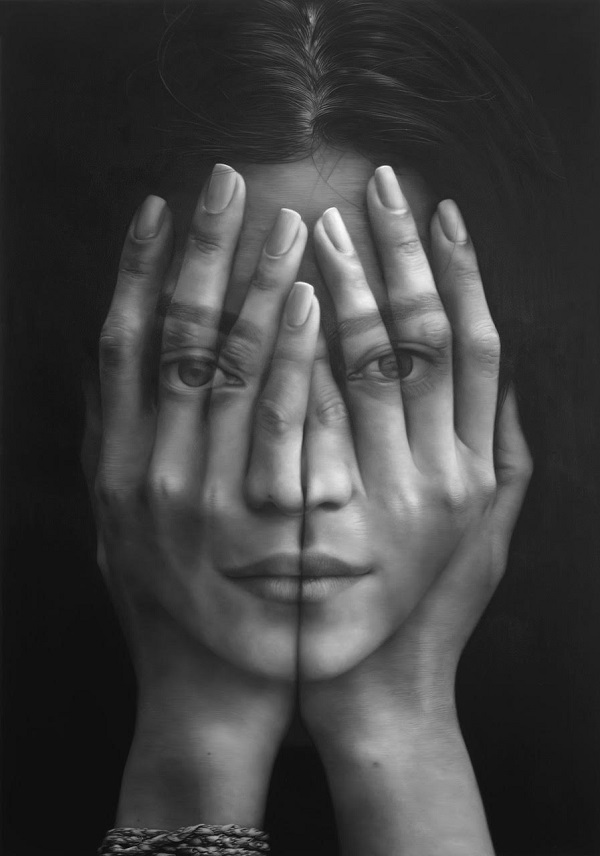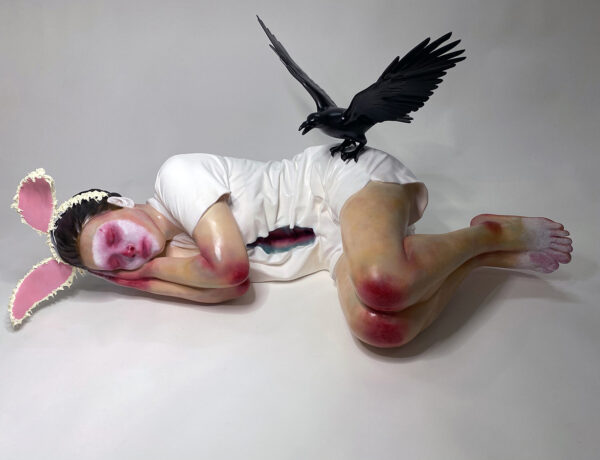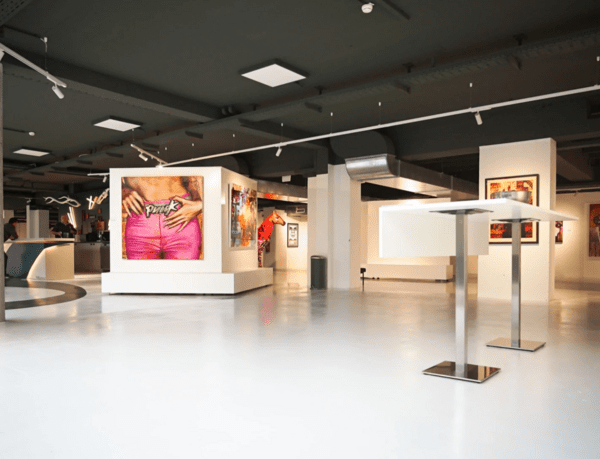Tigran Tsitoghdzyan is a New York City based artist who was born in Armenia. In all of my interviews, I can name only two artists with careers that started as early as age 10. Tigran had created hundreds of paintings by then. His drive for perfection started very early on and he has a very ambitious spirit with a variety of interests in many different creative mediums. Just last week “American Mirror Intimations of Immortality”, which is a documentary about Tigran debuted at the Egyptian Theatre in Hollywood. I look forward to seeing his next body of work as he hints below that it may be completely different than what we are used to seeing as his. I am certainly intrigued as I hope you will be too.
Tigran, it has been a few years since I last spoke with you. Seeing the new solo show at Allouche Gallery a few months ago was fantastic and I have witnessed you pushing new boundaries within your current work. Can you kindly tell our audience what role social media has played in your work? Has your subject matter been influenced by technology? Do you often choose models to paint or are your portraits of people you know?
Nicole, it was a pleasure seeing you at my show. I’m just an observer, and social media has definitely changed the flow of information and aesthetics in our days. The enhanced reality and filtered faces is a new phenomenon of social media and as an artist I couldn’t ignore it.
In order to understand your new work, I would like to take a step back and speak about how you started your career at the age of ten. Please speak of how hundreds of your pieces were shown in your mother country of Armenia, Spain, Russia, Japan and The U.S. How does one have that many pieces to show and can you tell us what the subject matter was and what the art looked like at such a young age?
It started for me really early. I was drawing and painting since I was basically born and was keep complaining to my parents that I couldn’t get the rich colors of the old masters with my pencils or water colors. Then at age of five, they got me the oil paints and I was hooked from day one.
I found myself painting all day, until I would finish a new painting, no matter how long it would take. I would always start my paintings with the eyes and never knew where and how the piece will evolve later. So by age of 10 I already accumulated hundreds of paintings in my parents apartment. The founder of the Modern Art and the Children’s Art Museum in Armenia was following me closely and finally curated my first solo show with 103 oils when I turned 10. The show had so much buzz surrounding it that it traveled to many countries for the next 2 years and 10 paintings were selected for the collection in the Children’s Art Museum in Yerevan.
I know your oil paintings are often seen by others as photographs. I am certain that must be a huge compliment as to your painting abilities yet is that what you are trying to convey to your audience? A sense of questioning the content and medium?
I think that photography definitely changed the painting. It first changed its documentation function and also the visual perspective of it. Then Photoshop changed it again and photography lost its documentation eligibility as a fact. So I start from that breaking point in our recent history of matters. But opposite to our newly found immediate time fashion- instead of accelerating the process to get a result as soon and easy possible, I slow it down. So yes, upon first glance at my pieces one may think my paintings look like photographs but actually their content has so much more information and “data” because I paint them for hundreds of hours without looking at any reference picture for approximately 90% of the time.
How I love your Mirror Series. I still wonder why the hands are often used as “blinders” for the portraits. What are you trying to convey by using that juxtaposition of the cupping hands over the faces?
I was observing how the selfie phenomenon has taken over social media. Self-portraiture was a very interesting theme in the art history, but it used to be reserved for few great artists with great skills to create one that would perfectly represent it’s subject matter. Today it became part of our culture and is now accessible to anyone and everyone. The part that I’m fascinated with is how the subjects now use filter to enhance their self-portraits. Today cell phones already recognize that you are doing a selfie and it filters your skin, enhance your features to a point where the audience views a person that may not look anything like their photographs. The demand makes even a company such as Apple integrate it into their new phones and most of people don’t even know that, they just love their devices that create their great selfies. So I had to react to this, and found that the hands on the face is the first and most natural move when you hide something. We are daily sharing our faces on social media, but it’s filtered and not real. Girls know their best angle, good lightning etc. so I started painting girls I knew, but in the way they would like to be seen by the others.
In your most recent work on display at Allouche Gallery, some of the eyes of your subjects have been replaced by palette knife sort of swipes. I felt this represented that we no longer “see” art, life, our surroundings. Is that what you had in mind when painting the newest work? I think we are now looking at our phones more than anything else within our daily lives. Do you agree that we have become desensitized as to what’s around us?
Yes it’s true. I think today we see more through posts of the “influencers” then what is in front of us. That new series of my work is criticizing the phenomenon of documenting and sharing on social media the importance of what we see and where we have been. So we look at art through our phones and read the comments and likes later on after posting a picture. The importance of how others see you, what you are doing on a daily basis and your values is higher than ever.
Is your palette black, white and all shades in between to simulate black and white photography?
I love colors, but I need the space that the absence of colors creates. The space in between the reality and my vision of it.
Is there something you can share with me that you have never told a journalist before with regards to your artwork? Then possibly share something having to do with table tennis? I hear you are one of the best.
I have so many different interests in art that I am thinking about going into a completely different direction and creating a new series of work using a pseudonym.
Table tennis is fun. I always loved sports and table tennis became a big hobby for me over the last 20 years. It’s also great for socializing. I made friends through table tennis around the world. I’m not that good, but let’s say good enough to know the few people who can beat me in NYC!
What is next for you Tigran?
So many ideas and projects. Time is the issue as my actual work takes so many hours to do. But all the new ideas don’t let me sleep and I can’t wait to dig into different directions of visual art.


